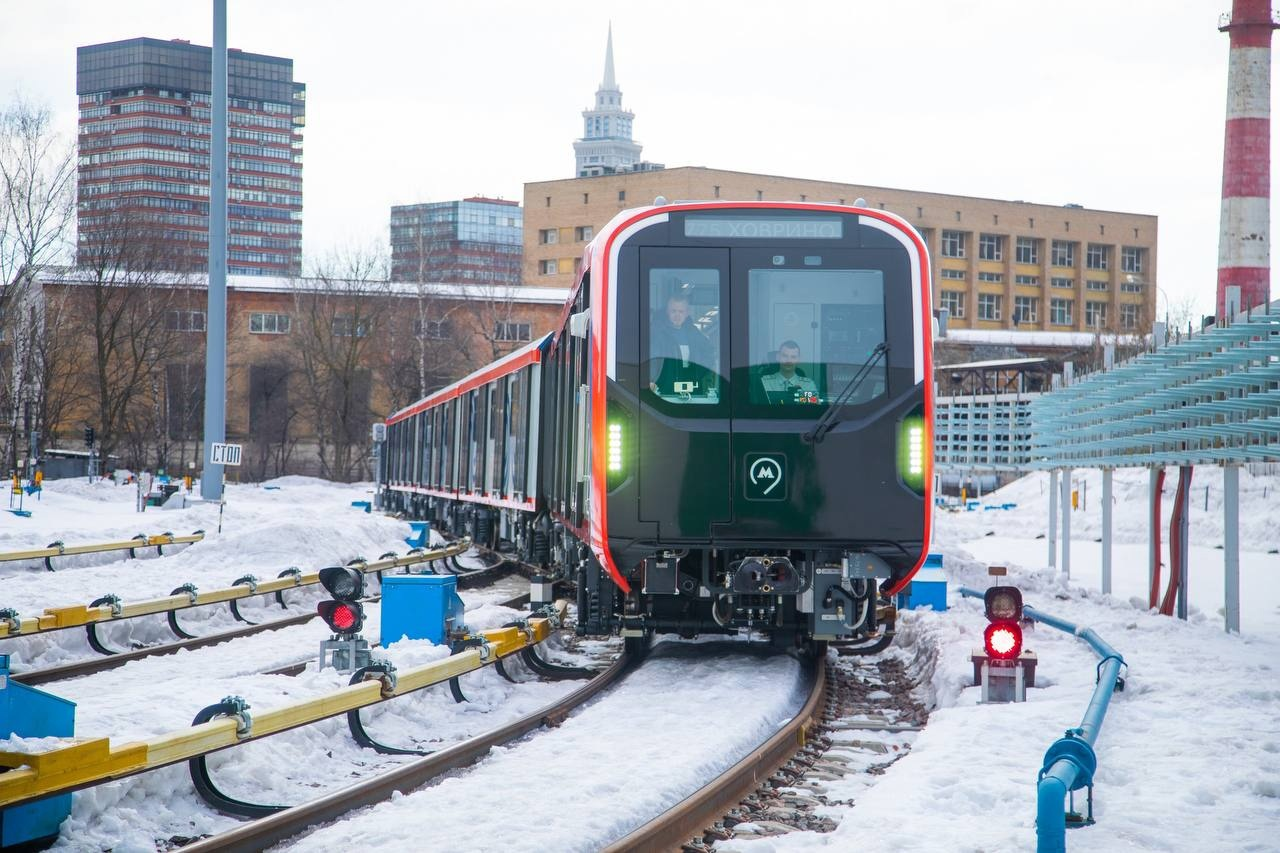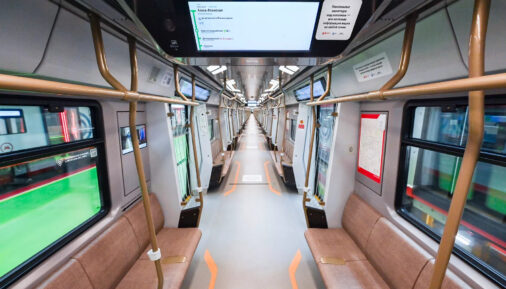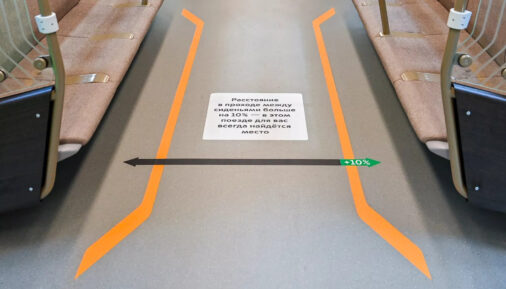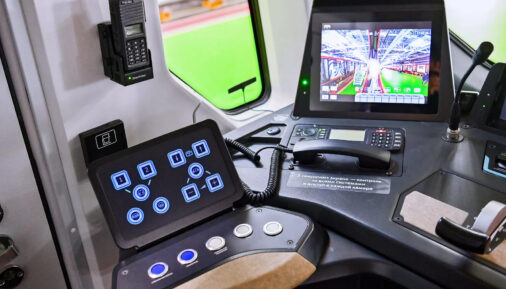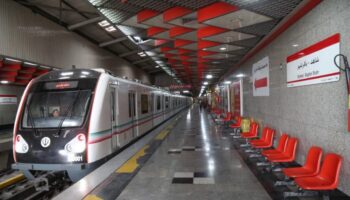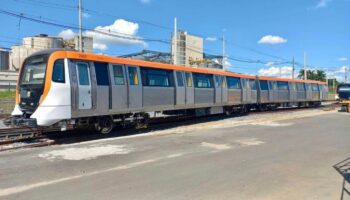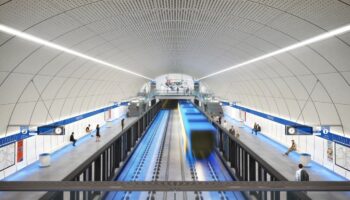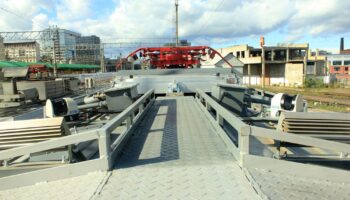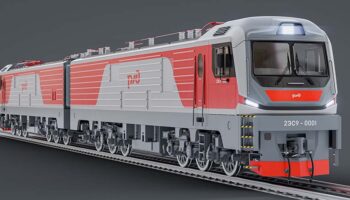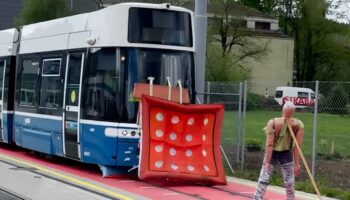Russia: A new version of TMH’s train was inaugurated this week, in the presence of Moscow Mayor Sergey Sobyanin.
The new trains have been on trials since January. They will initially replace the ageing 81-717/714 cars on the Zamoskvoretskaya (Green) Line.
The new vehicle is an update of the Moscow-2020, which has been in service for several years. The main changes are to the interior. The aisle has been widened by 10% and each car can now accommodate 17 more passengers. The seats are also wider and the upholstery is less susceptible to dirt. “The ceiling monitors have been changed. The USB chargers have been moved from the seats to the handrails, so standing passengers can now charge their phones. The head cars now have convenient ramps for people with reduced mobility”, says Yulia Temnikova, Moscow Metro’s deputy CEO for PR and marketing.
The Moscow Metro told Kommersant that the capital’s metro plans to buy 2,300 new cars by 2030. More than 500 of them will be the Moscow-2024. According to the supplementary agreement signed at the end of 2022, the manufacturer will deliver them in 2024–2025.
The investments announced by the capital are expected to ensure the renewal of 95% of the fleet by 2030. According to Moscow Metro, 2,200 cars or 35% of the fleet, are the oldest models: 81-717/714 and 81-740/741 Rusich.
Under the city’s transport development programme, the next generation of trains should arrive in 2026–2030. They will feature automated operation, train-to-infrastructure connectivity, new design and greater capacity.





